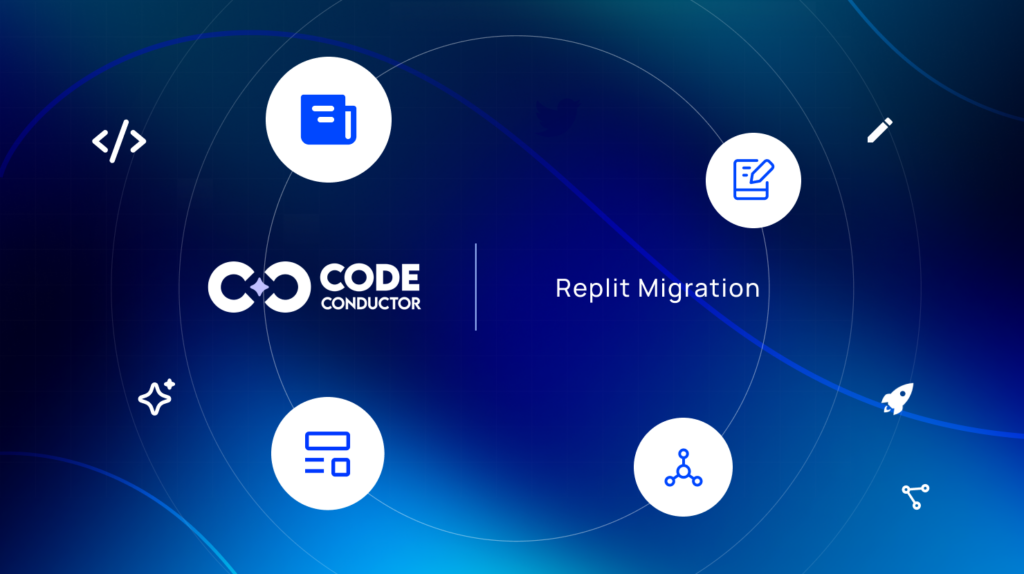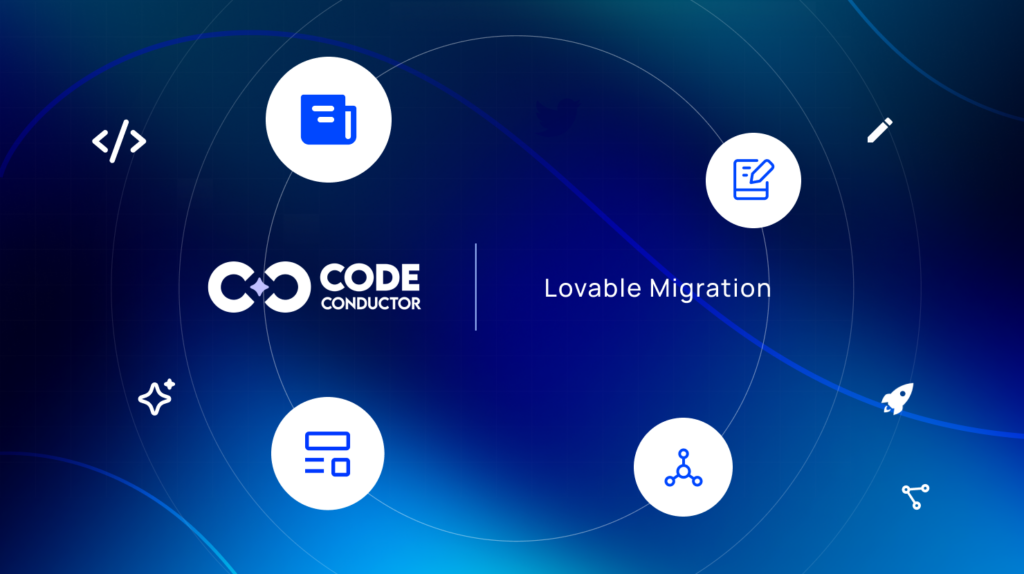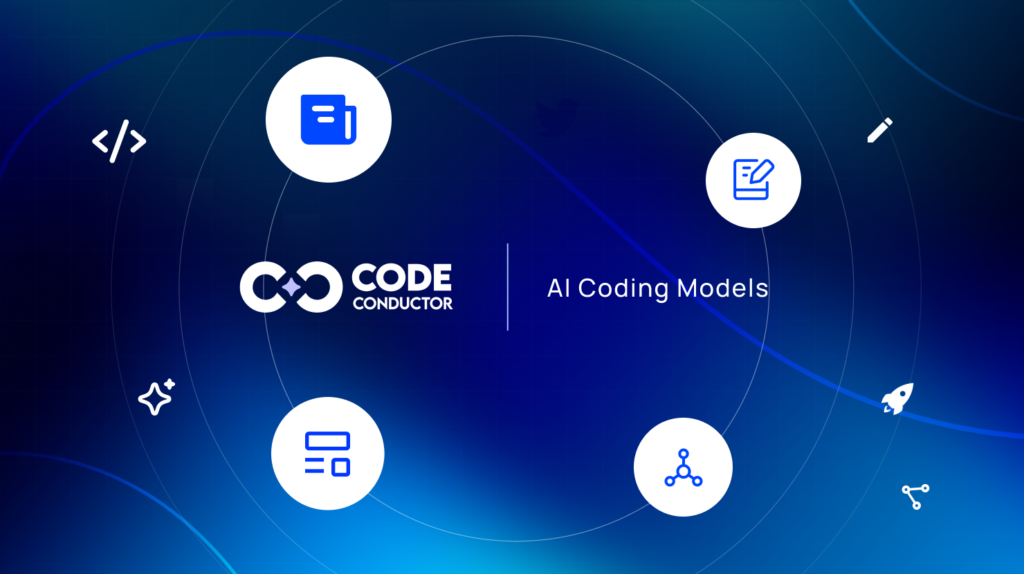Suppose you just launched a great AI system to improve your company’s operations. It’s smart, efficient, and promises great results.
But there’s a problem.
With AI becoming more common in workplaces—handling tasks from recruiting to marketing—comes the risk of security breaches and compliance issues.
If not properly managed, AI systems can open the door to data leaks, ethical problems, and legal troubles. The rules and standards for AI are complex and constantly changing. Keeping up with these changes is essential for any organization using AI.
As professionals, whether you are a manager, developer, security specialist, or AI enthusiast, understanding these challenges is crucial. This knowledge helps protect your company from problems and shows you are ahead of the game in AI development.
This article will explore the importance of security and compliance in AI. We’ll discuss the main security concerns, the regulations and ethical standards you need to follow and the tools and strategies that can help.
So, let’s get started!
| Foundational Capability | Explanation |
|---|---|
| Vulnerability Management | Continuously identify, classify, remediate, and mitigate AI vulnerabilities |
| Security Governance | Establish security policies, standards, and guidelines along with roles and responsibilities related to AI workloads |
| Security Assurance | Apply, evaluate, and validate security and privacy measures against regulatory and compliance requirements for AI workloads |
| AI Threat Detection | AI Detect and mitigate potential AI-related security threats or unexpected behaviors in AI workloads |
| AI Infrastructure Protection | AI Secure the systems and services used to operate AI workloads |
| Data Protection | Maintain visibility, secure access, and control over data used for AI development and use |
| Application Security | Detect and mitigate vulnerabilities during the software development lifecycle process of AI workloads |
| Identity and Access Management (IAM) | Manage and control user identities and access to AI systems and data |
| Incident Response | Develop and implement procedures to respond to security incidents affecting AI workloads |
In This Post
Key Aspects of Security in AI Development
Artificial Intelligence (AI) systems offer incredible benefits, but they also come with significant security concerns. To ensure your AI development is secure, it’s crucial to understand these key aspects:
1. Data Privacy
AI systems process vast amounts of sensitive data, making them prime targets for data breaches. Protecting this data is paramount to maintaining trust and compliance with regulations.
Encryption is essential to safeguard data both at rest and in transit, ensuring that even if data is intercepted, it remains unreadable. Implementing strict access controls is also crucial; only authorized personnel should have access to sensitive information. This not only prevents unauthorized data access but also helps in tracking who accesses the data and when. Practices like data anonymization and obtaining user consent further enhance data privacy, ensuring that personal information is handled responsibly.
2. Model Integrity
Ensuring the integrity of AI models is critical to their reliability and robustness. Model tampering and adversarial attacks pose significant threats, where malicious actors attempt to manipulate or deceive the AI models.
To combat this, developers must adopt secure coding practices and conduct regular vulnerability assessments. This includes rigorous code reviews and the application of security patches to address potential weaknesses. Additionally, incorporating robustness testing and defensive techniques during the model training phase can help in creating models that are resilient to tampering and manipulation, thus maintaining their integrity.
3. Adversarial Attacks
Adversarial attacks are deliberate attempts to deceive AI models by introducing misleading inputs. These attacks can significantly disrupt AI systems, leading to incorrect predictions or decisions.
Understanding the nature of adversarial attacks is the first step in defending against them. Robust training methods, such as adversarial training where models are trained on both normal and adversarial examples, can enhance the model’s resilience. Additionally, implementing anomaly detection systems helps in identifying unusual patterns that may indicate an adversarial attack.
Defensive techniques, like defensive distillation and resilience training, further fortify AI systems against these threats.
4. Access Control
Managing who has access to AI systems and data is a fundamental aspect of AI security. Implementing strict access control measures ensures that only authorized individuals can interact with sensitive systems and data.
Authentication mechanisms, such as multi-factor authentication, add an extra layer of security by requiring multiple forms of verification before granting access. Authorization policies should be clearly defined to determine what actions different users can perform.
Privileged access management and role-based access control further enhance security by limiting access based on user roles and responsibilities, thereby reducing the risk of unauthorized access and potential data breaches.
5. Threat Modeling
Identifying and mitigating potential security threats during the AI development process is critical. Threat modeling involves analyzing the system to identify potential security threats and vulnerabilities.
Developers can prioritize risks and implement appropriate defensive measures when they understand the attack surface. Regular risk assessments help in keeping the security protocols up to date and effective against evolving threats.
Proactive defense strategies, such as continuous monitoring and the adoption of security best practices, ensure that AI systems remain secure throughout their lifecycle. This approach not only protects the AI systems but also instills confidence among users and stakeholders.
Regulatory and Ethical Compliance in AI Development
Artificial Intelligence (AI) development is not just about creating powerful algorithms and models; it also involves adhering to a complex web of regulatory and ethical standards.
One of the most significant regulations affecting AI development is the General Data Protection Regulation (GDPR). This regulation, which applies to any company handling the data of EU citizens, imposes strict requirements on data privacy and protection. For AI systems, this means ensuring that personal data is processed lawfully, transparently, and for a specific purpose.
Similarly, in the healthcare sector, the Health Insurance Portability and Accountability Act (HIPAA) sets standards for protecting sensitive patient information. AI systems used in healthcare must comply with HIPAA Compliance requirements for data security and privacy.
Beyond these specific regulations, many countries are developing their own AI-specific laws and guidelines. Staying informed about these evolving regulatory frameworks is crucial for any organization involved in AI development.
What Are The Regulatory Compliance for AI?
Regulations are just one part of the compliance puzzle. Ethical guidelines also play a crucial role in AI development.
Ethical AI involves designing systems that are fair, transparent, and accountable. This means avoiding biases in AI algorithms, ensuring that AI decisions can be explained and understood, and taking responsibility for the outcomes of AI systems.
Non-compliance with ethical standards can lead to significant consequences, including loss of trust, legal challenges, and reputational damage. Organizations must prioritize ethical considerations alongside regulatory requirements to ensure the responsible development and deployment of AI technologies.
Best Practices for an Effective AI Regulatory Compliance Program
Achieving compliance in AI development requires a proactive and structured approach. Here are some practical strategies:
- Regular Audits: Conduct regular audits of AI systems to ensure they meet regulatory and ethical standards. This includes checking for biases, verifying data protection measures, and assessing transparency.
- Compliance Training: Provide ongoing training for all team members involved in AI development. This training should cover relevant regulations, ethical guidelines, and best practices for compliance.
- Ethical Review Boards: Establish ethical review boards to oversee AI projects. These boards can help ensure that AI systems are developed and deployed responsibly, with a focus on fairness and transparency.
- Documentation and Reporting: Maintain detailed documentation of compliance efforts. This includes records of data processing activities, audit results, and steps taken to address any compliance issues.
- Collaboration with Legal Experts: Work closely with legal experts who specialize in AI and data protection laws. They can provide valuable guidance on navigating the complex regulatory landscape.
Tools and Technologies for Secure AI Model Development

As Artificial Intelligence (AI) continues to integrate into various aspects of business and daily life, ensuring the security of these systems is critical. AI security tools and technologies are designed to protect data, prevent unauthorized access, and maintain the integrity of AI models. Here, we explore some of the essential tools and technologies that can help secure AI development.
1. Encryption Tools
Encryption tools are fundamental in protecting data used in AI systems. These tools ensure that sensitive information is encrypted, making it accessible only to authorized users. Encryption algorithms such as AES (Advanced Encryption Standard) and RSA (Rivest-Shamir-Adleman) are widely used to secure data at rest and in transit.
- VeraCrypt: Provides strong encryption for entire partitions or storage devices, ensuring data remains confidential.
- BitLocker: A full-disk encryption tool that protects data on Windows devices, commonly used to secure sensitive information.
2. Security Testing Platforms
Security testing is a crucial aspect of developing secure AI systems. Security testing platforms help identify vulnerabilities in AI applications by simulating various attack scenarios. These platforms enable developers to detect and address security flaws early in the development lifecycle.
- OWASP ZAP (Zed Attack Proxy): An open-source tool used for finding security vulnerabilities in web applications, which can be applied to AI web interfaces.
- Burp Suite: A comprehensive security testing platform that includes tools for scanning web applications and identifying potential vulnerabilities.
- Metasploit: A penetration testing tool that helps security teams perform detailed security assessments and exploit testing.
3. Threat Detection Systems
Threat detection systems are designed to identify and respond to security threats in real time. These systems use advanced analytics and machine learning algorithms to monitor AI systems for unusual activities and potential threats.
- Snort: An open-source network intrusion detection system that monitors network traffic in real time and analyzes packets for suspicious activity.
- Suricata: A high-performance network IDS, IPS, and network security monitoring engine that detects and responds to threats.
4. AI Security Frameworks
AI security frameworks provide structured guidelines and best practices for developing secure AI systems. These frameworks offer a comprehensive approach to understanding and mitigating security risks in AI development.
- MITRE ATT&CK: A framework for understanding the tactics and techniques used by adversaries, which can be applied to secure AI systems.
- NIST AI Risk Management Framework: Provides guidelines for managing risks associated with AI systems, ensuring they are secure and reliable.
5. Regular Updates and Maintenance
Security tools and technologies must be regularly updated and maintained to address evolving threats. This includes applying patches, updating algorithms, and staying informed about the latest security trends and vulnerabilities.
- Microsoft Update Management: A service that helps ensure software and systems are updated with the latest security patches.
- Red Hat Satellite: Provides system management capabilities, including patch management and updates for Linux environments.
- Puppet: An open-source software configuration management tool that automates the delivery and operation of software across its entire lifecycle.
Best Practices for AI Compliance in Business
Using these best practices, you can improve your security posture and make sure that AI development is ethical, secure, and compliant.
1. AI and the U.S. Government
The White House recently issued an executive order focused on the safe, secure, and trustworthy development and use of artificial intelligence. Here are some key initiatives:
- Internal Security Systems: Businesses must develop strong internal security systems and share safety information with the government.
- Combating Deep Fakes: Establish standards for detecting and protecting against deep fakes.
- Infrastructure Protection: Use AI to identify and fix infrastructure vulnerabilities.
- Preventing Discrimination: Address algorithmic discrimination to prevent landlords from using AI in a biased manner.
- Advancing Benefits: Utilize AI for developing life-saving drugs and advancing education.
- Accelerating Research: Share data resources to boost AI research and produce reports on AI’s impact, such as on the labor market.
- Supporting Small Businesses: Help small companies compete with large ones in AI.
- Immigration Policies: Allow AI-specialized immigrants to stay and work in the country.
- Government Hiring: Accelerate hiring AI professionals in government and aid in acquiring AI technology.
- International Collaboration: Expand international cooperation and help develop global AI standards.
The U.S. Equal Employment Opportunity Commission (EEOC) also issued guidelines under Title VII of the Civil Rights Act of 1964, which addresses AI usage in employment selection procedures. Title VII prohibits employment discrimination based on race, color, religion, sex (including pregnancy, sexual orientation, and gender identity), or national origin.
Therefore, if AI is used for employment decisions, it must be unbiased. Employers are responsible for ensuring that third-party AI tools do not present biases.
2. Compliance Standards
Although many compliance standards do not explicitly mention AI, several considerations apply when incorporating AI into your compliance program:
- GDPR: If processing personal data of EU residents, ensure transparency and consent, anonymize data, and design models to prevent re-identification.
- CCPA: Inform California residents about AI usage concerning their personal data.
- HIPAA: De-identify personal health information if shared with non-HIPAA compliant AI tools or third parties.
Many companies are adopting risk management frameworks like the NIST AI RMF to navigate these new tools due to the lack of specific AI-related text in current compliance standards.
3. Data Protection and Privacy
Protecting sensitive and private data is a primary concern in AI development. Implement robust data encryption, and scrubbing techniques, and anonymize user data where possible. Regularly audit data access and usage to mitigate risks.
- Vendor Risk Management: Conduct thorough reviews of AI solutions, understanding the business use case and types of data shared to assess associated risks accurately.
4. Model Security
Evaluate the security of AI models by conducting thorough validation and testing. Implement anomaly detection mechanisms to identify unexpected model behavior swiftly. Use proactive error and exception management to maintain AI application stability and minimize security loopholes.
For outsourced models, employ model or code signing to ensure integrity and authenticity.
5. Access Control and Data Protection Methods
Proper access control is crucial, especially in AI development. Implement these principles:
- Privileged Access Control: Protect backend systems and model repositories from model theft.
- Input Validation: Prevent injection attacks with prompt and input validation.
- User Intervention: Use human oversight for sensitive operations to prevent model poisoning.
- Limit Queued Actions: Prevent denial of service attacks by limiting queued actions and requests.
- Data Segregation: Avoid data spillover by segregating data.
From a security perspective, threat modeling is also helpful for evaluating how AI solutions or tools might be attacked. As such, the results of threat modeling can help identify what specific security controls or safeguards need to be implemented.
6. Continuous Monitoring and Incident Response
Develop periodic AI risk and threat assessments to identify and mitigate risks in AI models or tools. Ensure AI process integrity through regular input and output validation, vulnerability scanning, and continuous monitoring of resource utilization. Integrate AI models into existing risk management and security operations to stay proactive.
Conduct incident response exercises incorporating AI scenarios, such as AI tool outputs inadvertently disclosing sensitive data or AI tools being misused by attackers. These exercises can highlight areas for improvement in incident response processes.
7. Employee Training and Awareness
Effective implementation of these practices requires thoroughly trained employees. Educate your team about maintaining a healthy security posture and the risks associated with AI usage. Recommended training topics include:
- Company policies and expectations around AI usage
- Responsible and ethical AI usage
- Intellectual property management
- Secure developer AI implementation
- Business continuity and incident response
In order to harness the potential of AI, your organization will need to prioritize security and compliance in AI development and foster a culture of transparency and accountability.
Real-Life Use Cases For AI In Various Industries
Understanding how other organizations have successfully navigated the complexities of AI security and compliance can offer practical insights and inspiration.
Here are a few case studies from different industries that highlight effective approaches to securing AI systems and ensuring compliance.
1: IBM Watson Health – Ensuring Data Privacy with HIPAA Compliance
- Organization: IBM Watson Health
- Challenge: IBM Watson Health needed to develop an AI system to manage patient data while ensuring compliance with HIPAA regulations.
- Solution: IBM Watson Health implemented robust encryption methods to protect patient data both in transit and at rest. They also used secure access controls to limit data access to authorized personnel only. Regular audits and compliance training sessions were conducted to ensure adherence to HIPAA standards.
- Results: The AI system successfully managed patient data while maintaining full compliance with HIPAA. This not only protected patient privacy but also enhanced IBM Watson Health’s reputation for data security.
Learnings:
- Implementing strong encryption and access controls is essential for protecting sensitive data.
- Regular audits and training help maintain compliance over time.
2: HSBC – Achieving GDPR Compliance in Financial AI Systems
- Organization:HSBC
- Challenge: HSBC needed to ensure their AI-powered financial analysis tool complied with GDPR requirements for data protection.
- Solution: The company conducted a thorough data protection impact assessment (DPIA) to identify and mitigate potential risks. They implemented privacy-by-design principles, ensuring that data protection measures were integrated into the AI system from the start. HSBC also established a dedicated data protection officer (DPO) to oversee compliance efforts.
- Results: The financial analysis tool operated efficiently while complying with GDPR regulations. This proactive approach to data protection helped build trust with clients and regulatory bodies.
Learnings:
- Conducting DPIAs can identify and mitigate data protection risks early in the development process.
- Appointing a DPO ensures continuous oversight and adherence to data protection regulations.
3: Amazon – Ethical AI Implementation for Customer Personalization
- Organization:Amazon
- Challenge: Amazon aimed to use AI to personalize customer experiences while ensuring ethical use of customer data.
- Solution: Amazon developed an AI system with built-in fairness algorithms to avoid biases in personalized recommendations. They implemented transparent data processing practices, informing customers about how their data was used and allowing them to opt out. An ethical review board was established to oversee AI projects and ensure they met ethical standards.
- Results: The personalized customer experience was enhanced without compromising ethical standards. Customers appreciated the transparency and control over their data, leading to increased trust and loyalty.
Learnings:
- Integrating fairness algorithms can prevent biases in AI systems.
- Transparency and customer control over data usage build trust and loyalty.
Get A Free Demo & Experience CodeConductor Live

Ensuring security and compliance in AI development is crucial for the ethical and legal use of AI technologies. Throughout this article, we’ve explored AI security, regulatory standards, and real-world examples. Now, let’s see how CodeConductor helps create secure and compliant AI products.
AI’s rise brings significant security and compliance challenges. Ensuring data privacy, adhering to regulations like GDPR and HIPAA, and maintaining ethical standards are critical. Robust security measures and compliance protect organizations from legal and reputational risks and promote trust in AI.
CodeConductor – World’s 1st AI Software Development Platform, integrates advanced security protocols and offers tools for managing compliance with regulations such as GDPR and HIPAA. It emphasizes ethical AI practices with fairness algorithms and transparency features. Regular audits and monitoring help maintain ongoing compliance.
Using CodeConductor can streamline AI development while ensuring the highest standards of security and compliance. This reduces legal risks and builds trust with customers.

Founder CodeConductor






